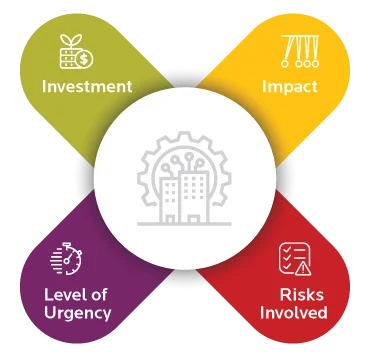For many, the first hurdle in the strategizing process is the problem of choice. Over two-thirds of CIOs express a desire to work with multiple providers to avoid vendor lock-in, but few of them end up allocating expenses evenly to realize true, cross-cloud portability. Many companies are spoilt for choice when it comes to settling on a cloud migration strategy, and the decision stress that it brings about is likely a reason as to why many stick to a single-vendor and end up implementing a direct-match integration in the first place. To combat this dilemma, CIOs will have to 'rightsize their way to the cloud' by thoroughly examining the computing and storage practices within the company.
The 5 R's of Cloud Migration
Rehost
Projections indicate that most cloud-spending is bound to come from 'slow and steady' companies that have only toyed with cloud migration strategies before. For such companies that have conservative cultures, and are only just beginning to implement a cloud strategy, rehosting is the way to go. This is essentially a 'lift-and-shift' approach that aims to replicate the existing on-premise stack to a cloud environment.
Refactor
Arguably the most expensive strategy to adopt, refactoring would require the companies to build their applications from scratch to develop cloud capabilities that might not exist in their current setup. The upside to such a strategy is that they are more compatible with future versions and would contribute heavily towards building business resilience.
Revise
Revising would mean that the company adopts a mix of the two strategies that are outlined above. The first step would be to make modifications to the existing code with the aim of setting up a solid base for legacy modernization. Once this is done, the next thing to do would be to refactor existing options in order to mobilize the cloud. A revision works towards organizing and optimizing the tweaked cloud applications to closely match the cloud attributes of the existing infrastructure.
Rebuild
A more extreme variant of the refactoring approach, rebuild necessitates abandoning existing code (and frameworks) in favor of a completely new ad dynamic variant of the existing application. This would allow for greater feasibility to realize the unique attributes inherent to the provider. This comes with the risk of a complete lock-in, which might not appeal to some CIOs.
Replace
Under select circumstances, companies would fare better by abandoning their existing applications and taking up commercially developed solutions by vendors. Under this strategy, companies will not have to worry about allocating resources towards a development team as there would be no need for one. However, the lack of control arising from such a strategy would result in issues with data accessibility, lock-ins and inconsistencies with syntactic data.

5 r's of cloud migration





